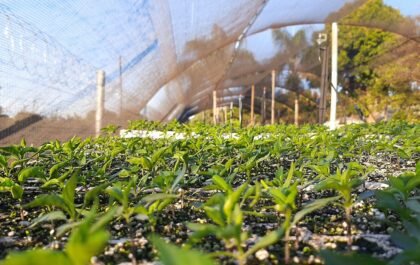Introduction to Animal Adaptations
The animal kingdom is a marvel of creativity and ingenuity. Every creature has its own unique story of survival, written in the language of adaptation. From the scorching sands of the desert to the icy expanses of the Arctic, animals have developed extraordinary traits that help them thrive against all odds.
Imagine a camel striding across endless dunes, perfectly designed for drought. Picture an arctic fox blending seamlessly into snowy landscapes to evade predators. Each species showcases fascinating adaptations that not only ensure their survival but also highlight nature’s remarkable ability to innovate.
In this exploration, we’ll delve into how physical changes shape these creatures’ lives and how learned behaviors enhance their chances in ever-changing environments. Join us on this adventure through diverse ecosystems where life finds a way against all challenges!
Physical Adaptations: Structural Changes for Survival
Physical adaptations are fascinating structural changes that help animals thrive in their unique environments. These modifications evolve over generations, allowing species to better survive and reproduce.
Take the giraffe, for instance. Its long neck enables it to reach high leaves on trees. This height advantage minimizes competition with other herbivores.
Then there’s the arctic fox, equipped with a thick layer of fur and smaller ears. This design retains body heat during frigid temperatures while minimizing heat loss.
Cacti wrens showcase another example. Their strong beaks allow them to access insects hiding within cacti spines—an essential food source in desert regions.
Every creature has its own story of survival through physical traits shaped by nature’s demands. Each adaptation reveals how remarkable life can be when faced with challenges.
Behavioral Adaptations: Learned Behaviors to Survive
Behavioral adaptations are fascinating. They showcase how animals adjust their actions to enhance survival.
Consider the cleverness of crows. These birds demonstrate problem-solving skills by using tools. They can bend twigs or drop stones to access food, showing a remarkable ability to learn and adapt.
Ants also exhibit learned behaviors in their colonies. They communicate through pheromones, guiding others to food sources or potential threats. Each ant contributes its knowledge for collective survival.
Then there’s the case of migratory birds. Species like the Arctic Tern travel thousands of miles between breeding and wintering grounds, instinctively knowing when to leave based on environmental cues.
These examples highlight that behavior plays a critical role in adaptation. Animals constantly observe, learn, and modify actions as needed within their ever-changing environments.
Examples of Animal Adaptations in Different Environments:
In the arid desert, survival is an art. Camels possess remarkable adaptations, like their ability to conserve water and withstand extreme heat. Their humps store fat, which can be metabolized into water when food is scarce.
Kangaroo rats are another marvel of desert life. They rarely drink water directly; instead, they extract moisture from seeds and have specialized kidneys that minimize loss.
Moving to the Arctic, polar bears showcase powerful adaptations for cold environments. Their thick fur insulates against frigid temperatures while a layer of blubber keeps them warm in icy waters.
Arctic foxes demonstrate incredible adaptability too. With seasonal coat changes from brown to white, they blend seamlessly into their surroundings all year round.
In lush rainforests, chameleons stand out with their color-changing abilities used for communication and camouflage against predators. Toucans sport vibrant bills not only for attracting mates but also for regulating body temperature amidst dense foliage.
– Desert Animals: Camels, Kangaroo Rats
Desert animals have evolved remarkable adaptations to thrive in arid environments. Take the camel, for instance. Known as the “ship of the desert,” camels store fat in their humps, which can be converted into water and energy when food is scarce. Their thick fur protects them from extreme heat during the day and cold at night.
Kangaroo rats are another incredible example. These small rodents rarely drink water; instead, they extract moisture from seeds they consume. Specialized kidneys allow them to excrete highly concentrated urine, minimizing water loss.
Both species showcase how life can flourish even in harsh conditions. They demonstrate nature’s ingenuity in survival strategies that continue to inspire scientists and enthusiasts alike. Each adaptation serves a specific purpose—ensuring survival amidst shifting sands and blistering sun.
– Arctic Animals: Polar Bears, Arctic Foxes
Arctic animals are remarkable examples of adaptation to extreme cold. Polar bears, with their thick layers of fat and fur, showcase nature’s ingenuity. Their white coats provide perfect camouflage against the snowy landscape, making them expert hunters.
These giants roam vast territories in search of seals, their primary prey. With powerful limbs and keen sense of smell, they can detect a seal resting on ice from miles away.
Then there’s the Arctic fox. This clever creature sports a stunning white coat during winter that shifts to brown or gray in warmer months. It thrives in harsh conditions by using its bushy tail for warmth and as a blanket while sleeping.
Both species exhibit behaviors that ensure survival—polar bears rely on strength and stealth while Arctic foxes use cunning tactics to find food amid fierce competition. The delicate balance between these adaptations allows them to flourish in one of the planet’s most inhospitable environments.
– Rainforest Animals: Chameleons, Toucans
Rainforests teem with life, and among the most captivating inhabitants are chameleons and toucans. Chameleons are renowned for their extraordinary ability to change color. This skill helps them blend into lush surroundings, evading predators while also communicating with other chameleons.
Toucans, on the other hand, flaunt vibrant beaks that can measure up to one-third of their body length. These beaks serve a dual purpose: they help reach fruit high in trees and regulate body temperature in humid climates. Their striking colors not only attract mates but also signal health and vitality.
Both creatures demonstrate remarkable adaptations that enhance survival in dense foliage. Whether it’s through camouflage or colorful displays, rainforest animals have developed unique strategies to thrive amidst fierce competition for resources. Each plays its role in maintaining the delicate balance of this biodiverse ecosystem.
Human Impact on Animal Adaptations
Human activity shapes the natural world in profound ways. Urbanization, pollution, and climate change disrupt ecosystems, forcing animals to adapt rapidly or face extinction.
Take urban environments, where creatures like raccoons have learned to navigate human-made obstacles. They scavenge through trash cans and thrive on discarded food. This adaptability showcases their intelligence but also highlights a troubling dependence on our waste.
Climate change poses an even greater challenge. Species that once thrived in specific habitats are now forced to migrate or alter their behaviors due to shifting temperatures and unpredictable weather patterns.
Endangered species may struggle more than others. Their adaptations might not keep pace with the rapid changes inflicted by humans. The result is a delicate balance as these creatures attempt to survive amidst modern challenges they never encountered before.
How Scientists Study and Learn from Animal Adaptations
Scientists are constantly exploring the intricate world of animal adaptations. Their research involves various methods, from field studies to advanced genetic analysis. Observing animals in their natural habitats provides valuable insights into how they interact with their environment and adapt over time.
One popular approach is the use of technology. Drones and camera traps allow researchers to monitor animal behaviors without disturbing them. This non-invasive technique yields a wealth of information about feeding patterns, mating rituals, and social structures.
Behavioral experiments also play a crucial role in understanding adaptations. By altering environmental conditions in controlled settings, scientists can observe changes in behavior or physical traits over generations. These studies shed light on how species may respond to climate change or habitat loss.
Collaboration among disciplines enhances this research further. Biologists partner with ecologists, anthropologists, and even engineers to tackle complex questions regarding survival strategies across different ecosystems.
The knowledge gained from studying animal adaptations not only enriches our understanding of biodiversity but also informs conservation efforts globally. Protecting these unique creatures means safeguarding the remarkable stories written into their genes over millennia—stories that continue to unfold as life adapts to an ever-changing world.
























